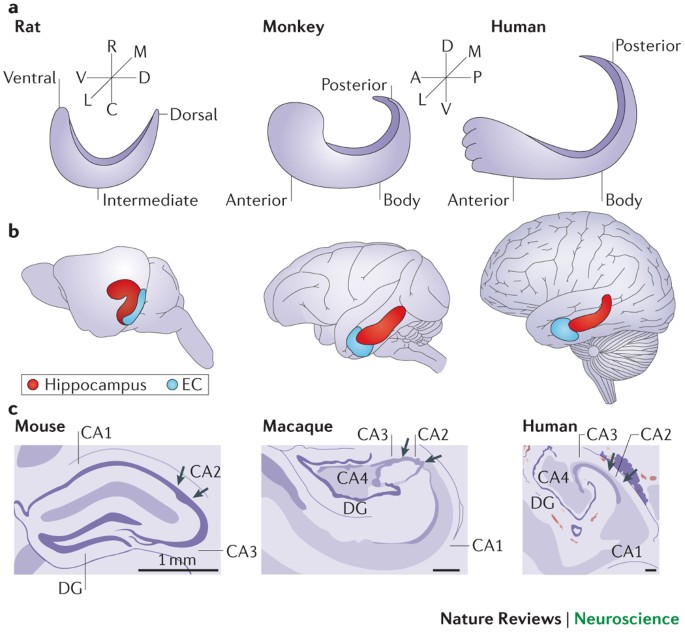
This framework allows the experience to be stored in such a way that it can be later retrieved as a conscious recollection of that experience. The hippocampus is a plastic and vulnerable structure that can get damaged. It is an S shaped structure which is a layer of densely packed neurons. Furthermore, the discovery of place cells, head direction cells, and grid cells in the rodent hippocampal formation established a firm foundation for the notion that the hippocampus plays a critical role in memory formation by providing the brain with a spatiotemporal framework within which the various sensory, emotional, and cognitive components of an experience are bound together. The hippocampus is part of the limbic system, and plays important roles in the consolidation of information from short-term memory to long-term memory, and in spatial memory that enables navigation. This research led to the discovery in the hippocampus of long-term potentiation, the pre-eminent model of the cellular basis of memory.

During emotional reactions, these two brain regions interact to translate the emotion into particular outcomes. The amygdala is specialized for input and processing of emotion, while the hippocampus is essential for declarative or episodic memory. Chapters on vascularization and three-dimensional MRI round off the study, making this of interest to everyone working in the field of neuroscience. (Sir David) Ferrier (18431928) has shown that electrical stimulation of the simian hippocampus results in sniffing movements of the lip and nostril. Ever since the 1957 report of the case study H.M., who famously lost the ability to form new, declarative memories after surgical removal of the hippocampus and nearby temporal lobe structures to treat intractable epilepsy, the hippocampus has been at the forefront of research into the neurobiological bases of memory. Emotion influences various cognitive processes, including learning and memory. Comparative anatomists know that phylogenetically the hippocampus develops in association with the olfactory system and a strong sense of smell. Most of the actual information processing in the brain takes place in the cerebral cortex.The hippocampus is one of the most thoroughly investigated structures in the brain. The telencephalon contains the largest part of the brain, the cerebrum. The diencephalon contains structures such as the thalamus and hypothalamus which are responsible for such functions as motor control, relaying sensory information, and controlling autonomic functions. There are two major divisions of forebrain: the diencephalon and the telencephalon. The forebrain is the division of the brain that is responsible for a variety of functions including receiving and processing sensory information, thinking, perceiving, producing and understanding language, and controlling motor function.

2 and to surface-sampled T1w/T2w intensity in Fig.
HIPPOCAMPUS ANATOMY REVIEW MANUAL



 0 kommentar(er)
0 kommentar(er)
